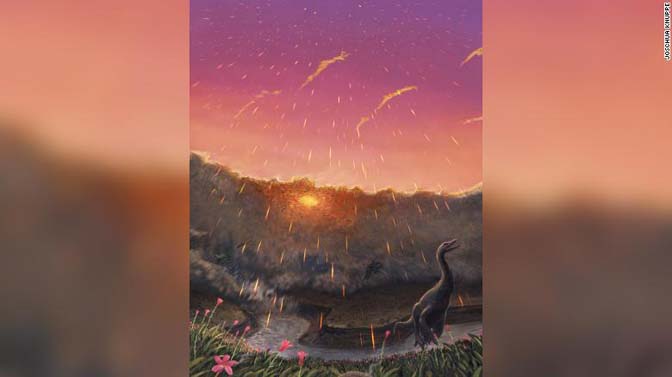
An artist’s impression of the Tanis river site in North Dakota moments after the asteroid strike that doomed the dinosaurs to extinction 66 million years ago.
Picture a calm spring day 66 million years ago in what’s now North Dakota. Perhaps a Triceratops was lying in the sun, while in the river freshwater paddlefish, mouths gaping, were foraging plankton.
Seconds later, a 10-meter-high (33-foot-high) wall of water rushes in from the east and then spheres of glass start to rain down from the sky — some of them still on fire as they hit the river.
These could have been the very last moments of the dinosaur era, which came to a cataclysmic end when a city-size asteroid struck the shallow ocean off Mexico’s Yucatan Peninsula, killing off three quarters of all species on Earth. According to a new study of fossilized fish that were found at North Dakota’s Tanis fossil site and perished as a result of the devastating impact, the asteroid hit in springtime.
Read the entire article posted February 23, 2022 at cnn.com.
link submitted by Gene Savoy Jr.
